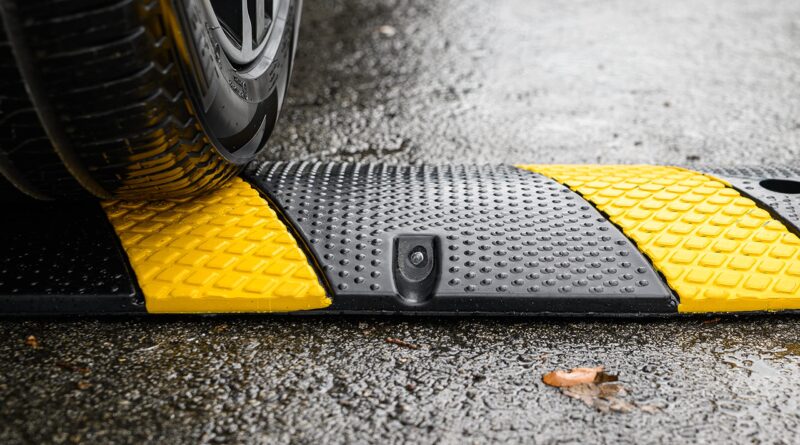Real-Life Case Studies: Speed Bumps Saving Lives
Speed bumps have long been a staple in traffic management strategies, but their impact goes beyond just slowing down traffic. In many cases, these simple yet effective tools have saved lives by reducing vehicle speeds and preventing accidents. This article explores real-life case studies that highlight how speed bumps have played a crucial role in saving lives and enhancing road safety.
Case Study 1: School Zones and Child Safety
Background
A school district in a suburban area faced growing concerns over speeding in school zones, especially during peak drop-off and pick-up times. Vehicles often exceeded speed limits, creating a hazardous environment for children crossing the street.
Solution
The district decided to install speed bumps near the school entrances. These bumps were strategically placed in the most high-traffic areas, including areas where students typically cross.
Outcome
After installation, speeding incidents dropped by 65%, and there was a noticeable decrease in near-miss accidents. Teachers and parents reported feeling more confident in the safety of their children. The speed bumps acted as a visual and physical deterrent to speeding drivers, ensuring a safer environment for students.
Case Study 2: Residential Neighborhoods and Pedestrian Protection
Background
In a quiet residential neighborhood, speeding had become a major issue, with drivers regularly exceeding the 25 mph limit. Local residents expressed concerns about children playing in the streets and the potential for accidents.
Solution
The community worked with the city council to install speed bumps throughout the neighborhood, focusing on streets near parks and playgrounds.
Outcome
Following the installation, the average vehicle speed dropped by nearly 40%. Residents reported a sense of relief, and children could play outside with greater peace of mind. The speed bumps effectively reduced speeding and prevented potential accidents, especially in high-risk areas where pedestrian activity was common.
Case Study 3: Hospital Areas and Emergency Response Times
Background
A hospital located in a busy urban area was dealing with a high volume of traffic near its entrance, including ambulances rushing to the emergency department. The constant flow of vehicles created dangerous conditions for both patients and healthcare workers.
Solution
To improve safety, the hospital collaborated with city officials to install speed bumps on the roads leading up to the hospital entrance. These bumps were designed to slow down traffic and ensure that vehicles gave priority to emergency responders.
Outcome
After installation, hospital staff reported fewer near-accidents, and ambulances could more easily navigate through the area without concerns about traffic congestion. The speed bumps were particularly effective in reducing reckless driving and providing safer access for emergency vehicles, ultimately saving lives by reducing response times.
Case Study 4: Busy Parking Lots and Accident Prevention
Background
A shopping mall had frequent incidents of pedestrians being struck by vehicles in the parking lot. Drivers often accelerated as they navigated the lot, making it difficult for people to cross safely.
Solution
The mall installed speed bumps in various sections of the parking lot, especially near crosswalks and areas with heavy foot traffic.
Outcome
The speed bumps led to a 50% decrease in pedestrian accidents. Customers and employees reported feeling safer while walking through the lot. The bumps ensured that drivers slowed down significantly, creating a safer environment for pedestrians and preventing accidents from occurring.
Case Study 5: Rural Roads and Wildlife Protection
Background
In a rural area with frequent wildlife crossings, drivers often sped through roads, leading to fatal accidents involving animals such as deer and livestock. Local authorities sought a solution to reduce both vehicle speeds and accidents involving wildlife.
Solution
Speed bumps were installed at key locations along the roads known for high wildlife activity, particularly in the evening and early morning hours when animals were most active.
Outcome
Since the installation, there has been a 30% reduction in wildlife-related accidents, and the local community has seen fewer vehicle collisions. The speed bumps not only helped slow down drivers but also provided better visibility for wildlife crossing, allowing for safer coexistence between drivers and animals.
Conclusion: The Life-Saving Potential of Speed Bumps
These case studies demonstrate that speed bumps are more than just tools for controlling traffic flow—they are vital safety measures that can save lives. From protecting schoolchildren and pedestrians to reducing wildlife accidents and enhancing emergency response times, the real-world impact of speed bumps is undeniable. When implemented in the right areas, speed bumps offer an effective, low-cost solution to making roads safer for everyone.




